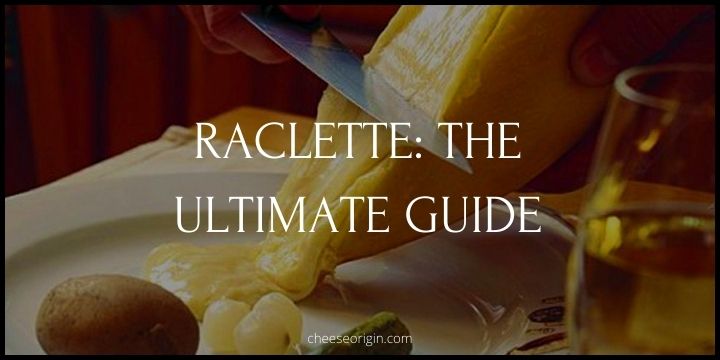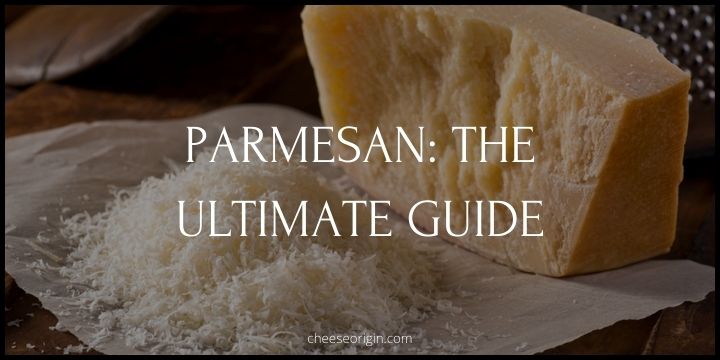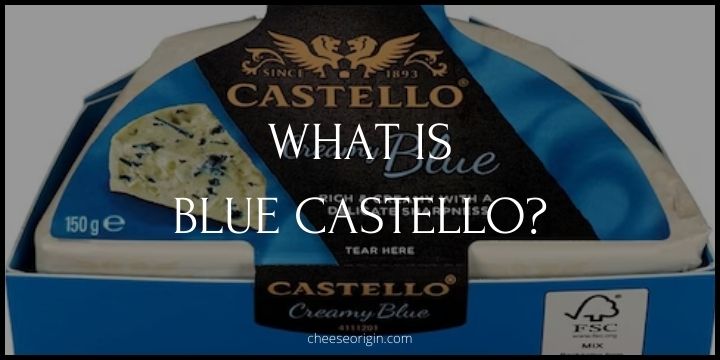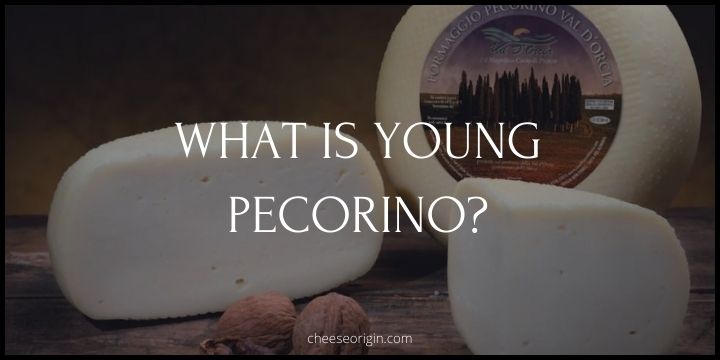What is Raclette Cheese? A Deep Dive into the Melting Heart of Swiss Cuisine

From the snowy peaks of the Swiss Alps to your dinner table, Raclette cheese has travelled a long way, melting hearts and appetites along its journey.
In this post, we’ll embark on a culinary adventure, exploring the delightful world of Raclette cheese. We’ll delve into its rich history, the traditional preparation methods, and even its modern adaptations.
Whether you’re a seasoned cheese connoisseur or a curious foodie looking for your next gastronomic obsession, this guide will be your passport to a warm, gooey culinary experience like no other.
Quick Facts About Raclette Cheese
| Raclette Cheese Quick Facts | Description |
|---|---|
| Origin | Switzerland |
| Milk Source | Traditionally made from cow’s milk |
| Texture | Semi-hard |
| Flavor | Nutty, slightly sweet, and very savory |
| Color | Pale yellow |
| Aging Process | Typically aged for 3-6 months |
| Protected Designation of Origin | Raclette du Valais has a Protected Designation of Origin (PDO) in Switzerland |
| Historical Origins | The name comes from the French word ‘racler’, which means ‘to scrape’. This cheese was traditionally melted and scraped off onto food |
| Uses | Traditionally melted and scraped onto potatoes, pickles, and onions. Also used in the Swiss dish also called Raclette |
What is Raclette Cheese?

Raclette is a semi-hard cheese that originated from Switzerland. It’s traditionally made from cow’s milk and is most famous for its melting qualities, which make it a staple in Swiss cuisine.
The name ‘Raclette’ comes from the French word ‘racler’, which means ‘to scrape’. This refers to the traditional method of serving this cheese. A wheel of Raclette is usually cut in half and heated, either by a fire or a special machine. As the cheese melts, it’s scraped onto boiled potatoes, pickles, and onions.
Raclette cheese has a smooth, creamy texture that melts easily. The flavor is nutty, slightly sweet, and very savory. It has a distinctive aroma, which can be quite strong, especially with aged versions of the cheese.
In Switzerland, specifically in the region of Valais, there is a variant of the cheese called Raclette du Valais, which has a Protected Designation of Origin (PDO).
What kind of cheese is used for raclette?
Raclette cheese, a semi-hard cow’s milk cheese from Switzerland, is the most commonly used cheese for raclette due to its mild, nutty flavor and excellent melting properties. This cheese has been matured for at least three months and can be made from either raw or pasteurized milk.
However, if you don’t have access to Swiss Raclette, there are several suitable alternatives. Gruyere, Comte, and Beaufort are some of the most popular substitutes, all known for their good melting characteristics. Cheddar, particularly mild cheddar, and Mozzarella can also be used.
Remember, the key to a great raclette is a cheese that melts well, so feel free to experiment with different types to find your personal favorite.
What do you eat cheese raclette with?
Here are some of the most common foods you can enjoy with Raclette:
- Potatoes: Boiled or roasted potatoes are a classic pairing. The starchy, mild flavor of the potatoes pairs perfectly with the rich, creamy Raclette.
- Charcuterie: Thin slices of prosciutto, salami, or other cured meats are often served alongside Raclette.
- Pickles and Pickled Onions: The tangy, acidic flavors of pickles and pickled onions provide a nice contrast to the rich, fatty cheese.
- Vegetables: Steamed or grilled vegetables such as bell peppers, mushrooms, broccoli, and zucchini are delicious when topped with melted Raclette.
- Bread: A crusty baguette or artisanal bread can be used to scoop up the melted cheese.
- Fruits: Apples, pears, and grapes can provide a sweet contrast to the savory cheese.
- Wine: A white wine, especially those from the same regions as Raclette cheese (like a Swiss Fendant or French Savoie), is traditionally served with Raclette.
The key to a great Raclette meal is balance. The richness of the cheese should be offset by the other components on your plate, so don’t be afraid to experiment with different combinations to find your perfect match!
Also read: A Comprehensive Guide to Enjoying Cheese Platter with Wine
Is raclette a strong cheese?
Raclette is not typically considered a strong cheese. It has a semi-hard texture and is known for its smooth, creamy melt and mild, slightly nutty flavor.
However, the intensity of its flavor can vary based on its age.
Younger Raclette cheeses will have a more delicate, milky taste, while older ones can develop a stronger, more robust flavor profile.
Despite these variations, Raclette is generally less pungent compared to other types of cheese like blue cheese or mature cheddar.
How does raclette cheese taste? Tasting notes
Here are some tasting notes to give you an idea of what to expect:
- Texture: Raclette is a semi-hard cheese with a creamy and smooth texture when melted. It’s known for its exceptional melting qualities, becoming luxuriously gooey without losing its texture.
- Flavor: The flavor of Raclette is generally mild yet complex. It has a distinctive, slightly nutty taste, which can become more pronounced as the cheese ages. Some people also detect hints of sweet milk and fresh hay.
- Aroma: Raclette has a moderate aroma that’s often described as earthy or barnyard-like. The smell can intensify when the cheese is melted, releasing a warm, savory scent that’s hard to resist.
- Aftertaste: The finish of Raclette is typically smooth and lingering, leaving a pleasant, slightly salty aftertaste on the palate.
- Pairings: Raclette pairs well with medium-bodied white wines, like those from the Swiss Valais region. It’s also great with pickles, cured meats, potatoes, and other hearty foods.
Can you eat raclette cheese without melting?
Yes, you can eat Raclette cheese without melting it. Although Raclette is traditionally served melted, it can also be enjoyed cold or raw.
It’s often cut into thin slices or small cubes for snacking or added to sandwiches, salads, and other dishes.
However, the cheese’s full flavor and creamy texture are most prominent when it’s melted, which is why it’s commonly served this way in the traditional Swiss dish of the same name.
What is the melting point of raclette cheese?

Raclette cheese has a melting point of approximately 130 to 140 degrees Fahrenheit (54 to 60 degrees Celsius). This relatively low melting point is what gives Raclette its signature gooey and creamy texture when heated.
It’s important to note that the exact melting point can vary based on specific factors, such as the age of the cheese and the precise fat content.
Is raclette just Swiss cheese?
Raclette is indeed a type of Swiss cheese, but it’s not just any Swiss cheese. It’s a semi-hard cow’s milk cheese that is particularly known for its excellent melting properties. Raclette is traditionally used in the Swiss dish of the same name, where it is melted and scraped onto foods like potatoes and cured meats.
However, Raclette isn’t just about the cheese itself. It’s also an entire dining experience and cultural tradition in Switzerland. The cheese is typically melted in front of a fire or with a special machine and then scraped off onto the accompanying foods. This social dining experience is what truly defines Raclette, beyond just the cheese itself.
While Raclette cheese is traditionally used for this dish, other types of cheese like Gruyère or Emmental can also be used.
Is raclette similar to brie?
| Raclette | Brie | |
|---|---|---|
| Origin | Switzerland (Valais region) | France (Brie region) |
| Type of Milk | Cow’s milk | Cow’s milk |
| Texture | Semi-hard | Soft, creamy |
| Flavor | Mild, slightly nutty and sweet; savory when melted | Rich, creamy, slightly fruity; tangy rind |
| Typical Usage | Melted and scraped over food in traditional Swiss dish | Enjoyed cold or at room temperature, in sandwiches, on crackers, or baked as a dip |
| Melting Properties | Excellent | Good, but can become runny |
| Rind | Edible, thin, smooth | Edible, white bloomy rind |
In essence, while both cheeses offer delightful culinary experiences, they are quite different from each other.
>> Click here to read our in-depth guide on brie
Do you serve bread with raclette?
Yes, bread is a traditional accompaniment to Raclette. A staple in Swiss cuisine, Raclette is often served over small, boiled potatoes and alongside pickles and onions.
However, it’s also common to serve warm, crusty bread for dipping into the melted cheese. The bread can be used to scoop up the cheese directly from the Raclette grill or spread with the cheese once it’s been scraped onto a plate.
Is raclette cheese healthy?
Raclette cheese is considered relatively healthy compared to other types of cheese.
It contains a good amount of protein, calcium, and vitamins A, making it a nutritious choice. Here are some key nutritional facts about Raclette cheese:
- Protein: Like most cheeses, Raclette is a good source of protein. This macronutrient is essential for building and repairing tissues in the body.
- Calcium: Raclette cheese is rich in calcium, which is crucial for bone health.
- Vitamin A: This vitamin, which is present in Raclette cheese, is vital for maintaining healthy vision, skin, and immune system.
- Low Carbohydrates: Raclette cheese contains almost no carbs, making it a suitable choice for those following a low-carb or ketogenic diet.
- Calories: An ounce (28g) of Emmi Raclette cheese contains approximately 100 calories.
However, like all cheeses, Raclette is high in fat, including saturated fat, and contains a significant amount of sodium. These factors can contribute to heart disease if consumed in excess. Therefore, as with any food, moderation is key when including Raclette cheese in your diet.
Raclette nutrition facts
| Nutrient | Amount per 100g |
|---|---|
| Calories | 344 |
| Protein | 26g |
| Fat | 26g |
| Saturated Fat | 19g |
| Carbohydrates | 0g |
| Sodium | Varies by brand |
Also read: Savor the Flavor: 20 Cheeses with the Least Lactose
Why is raclette cheese so expensive?
Raclette cheese tends to be more expensive due to several factors:
- Quality of Milk: Swiss raclette cheese is made from the best milk, typically produced by grass-fed cows. The quality of milk directly impacts the cost of the cheese.
- Production Process: The process of making raclette cheese is quite labor-intensive and requires a high level of craftsmanship, which adds to the cost.
- Geographical Limitations: Raclette is derived from a specific breed of cow in a particular region, which can increase the cost due to geographical limitations and transportation costs.
- Availability: Raclette cheese isn’t always easy to find in local markets. Its rarity can drive up the price.
- Taste and Texture: The unique flavor and excellent melting properties of Raclette make it highly sought after, which can also contribute to its higher price.
While it may be more costly than other cheeses, many fans of Raclette find the expense worthwhile for its unique taste and texture.
Where to buy raclette cheese?
Here are 7 places where you can buy Raclette cheese in the United States:
- RacletteCorner: A dedicated store for Raclette, offering imported Raclette Cheese from Switzerland and France.
- Amazon: You can find French Raclette Cheese and Swiss Raclette on Amazon.
- Emmi USA: They offer Raclette Cheese made in Switzerland.
- Trader Joe’s: They offer Raclette Sliced Cheese, ready to melt over anything you desire.
- Whole Foods Market: You can find Emmi Swiss Raclette at Whole Foods Market.
- Alp & Dell Cheese: They offer both Swiss & French Raclette Cheese.
- Jungle Jim’s International Market: If you’re within driving distance of the Cincinnati area, Jungle Jim’s in Fairfield has several kinds of raclette cheese.
Raclette substitutes and alternatives
The top 10 substitutes and alternatives for Raclette cheese are:
- Gruyere Cheese: This Swiss cheese is known for its excellent melting properties, making it an ideal substitute for Raclette.
- Emmental Cheese: Emmental, another Swiss cheese, is a great Raclette substitute due to its mild flavor and good melting properties.
- Fontina Cheese: This Italian cheese is semi-soft and has a slightly nutty flavor. It melts well, making it a suitable alternative to Raclette.
- Asiago Cheese: Asiago is an Italian cow’s milk cheese that can vary in consistency based on aging, but it’s generally smooth and slightly sweet with good melting properties.
- Appenzeller Cheese: Appenzeller is a Swiss semi-hard cheese known for its distinct, spicy flavor. It also melts well, making it an interesting alternative to Raclette.
- Taleggio Cheese: Taleggio is an Italian soft cheese with a strong aroma but mild flavor. It’s a good melting cheese and can be used as a Raclette substitute.
- Comte Cheese: Comte is a French cheese made from unpasteurized cow’s milk. It’s known for its strong, slightly sweet flavor and is a suitable substitute for Raclette.
- Gouda Cheese: Gouda is an excellent alternative to Raclette because of its mild and sweet flavors. Being a soft cheese, it is perfect for melting.
- Double Gloucester Cheese: This is a traditional, semi-hard cheese made from cow’s milk in England. It has a creamy texture and mild flavor, making it a good substitute for Raclette.
- Beemster Cheese: Beemster is a Dutch hard cheese known for its rich, nutty flavor. It’s a good melting cheese and can be used as a Raclette substitute.
Please note that while these cheeses can substitute for Raclette, they each have unique characteristics that may slightly alter the taste and texture of the dish.
What goes well with raclette? Pairing guide
What food goes well raclette:
| Food Category | Examples |
|---|---|
| Fruits | Apples, Pears, Grapes |
| Vegetables | Potatoes, Onions, Bell Peppers |
| Breads | Baguette, Rye Bread, Sourdough |
| Meats | Ham, Prosciutto, Salami |
| Pickled Foods | Gherkins, Pickled Onions, Olives |
Also read: What Fruit Goes on a Charcuterie Board?
What beverage goes well raclette
| Beverage Category | Examples |
|---|---|
| Wines | Dry White Wine (such as Fendant), Light Red Wine, Rosé |
| Beers | Wheat Beer, Craft Lager, Belgian Ale |
| Non-Alcoholic | Sparkling Water, Apple Cider, Grape Juice |
Also read: Best Wine and Cheese Pairings: The Ultimate Guide
The history of Raclette

Raclette is a Swiss dish that has a rich history dating back centuries. The name “Raclette” comes from the French word “racler,” which means “to scrape.” This is in reference to the way the melted cheese is scraped off onto the other ingredients.
Historically, Raclette was a meal for peasants in the mountainous regions of Switzerland. It’s believed that the dish originated when herdsmen in the Swiss Alps would bring cheese with them when they moved their cows to and from pastures. At night, they would place the cheese near the campfire to soften it, then scrape the melted part off and enjoy it with bread, potatoes, and pickles.
The traditional method of melting the cheese involves heating a large wheel of Raclette cheese by the fire or under a special heat lamp, then scraping the melted cheese onto the plate. Modern variations of the dish often use small, electric tabletop grills with individual pans, known as coupelles, where slices of Raclette cheese are melted and then poured over the other ingredients.
While it was originally a Swiss dish, Raclette has also become popular in many other countries, particularly in France. It has also spread to other parts of the world, thanks to its delicious flavor and the fun, communal experience of cooking and eating it together.
Frequently Asked Questions
1. Can you use cheddar cheese on a raclette?
Yes, you can use cheddar cheese on a raclette grill. While Raclette cheese is the traditional choice, it’s perfectly okay to experiment with other types of cheese.
Cheddar melts well and has a strong, tasty flavor that can complement the other ingredients you might use in your raclette meal, such as potatoes, meats, and vegetables.
2. Does raclette cheese need to be refrigerated?
Yes, Raclette cheese should be refrigerated. Like most types of cheese, it needs to be stored in the refrigerator to maintain its freshness and prevent spoilage.
Once you’ve opened the packaging of the cheese, it’s best to wrap it tightly in plastic wrap or put it in an airtight container before placing it back in the fridge. This helps to prevent the cheese from drying out and absorbing flavors from other foods in the refrigerator.
If you’re planning to use the cheese for a raclette meal, you might want to take it out of the fridge about half an hour before you start cooking. This allows it to reach room temperature, which can help it melt more easily.
3. Can you drink water with raclette cheese?
The tradition of eating raclette cheese comes with different opinions about what beverages should accompany it. There’s a belief, particularly in Switzerland, that drinking water with raclette can cause the cheese to solidify in your stomach, making digestion difficult. This is why some suggest sticking to drinks like wine, beer, or hot tea instead (source: Food Charmer, Fairfield Cheese, The Local CH).
However, other sources argue that drinking water with raclette cheese will not cause any digestive issues. According to Mister Raclette and Vim Buzz, it’s perfectly fine to drink water with raclette cheese, and still water is actually a popular choice to accompany this dish.
In conclusion, while there are traditional beliefs about what to drink with raclette, it ultimately comes down to personal preference and how your body handles it. You can certainly try drinking water with raclette if you prefer, but be aware of how your body reacts and adjust accordingly.
4. Can I eat raclette without cooking it?
Yes, you can eat Raclette cheese without cooking it. Raclette is a semi-hard cheese that can be enjoyed both melted and unmelted. When served at room temperature, it has a creamy texture and a slightly nutty flavor, similar to Gruyère cheese.
However, the most traditional way to enjoy Raclette is to melt it. The name “Raclette” itself comes from the French word “racler,” which means “to scrape.” This refers to the practice of melting the surface of the cheese and then scraping it onto potatoes, pickles, and other accompaniments.
So while you can certainly eat Raclette cheese without cooking it, you might want to try it melted at least once to experience it in its most traditional form.
5. How do you cut raclette cheese?
Raclette cheese is typically sold in large wheels, but you can also find it pre-sliced or in smaller portions. If you have a large piece of Raclette cheese, here’s how to cut it:
- Remove the rind: The rind of Raclette cheese is usually not eaten. Use a sharp knife to carefully remove the rind from the sides of the cheese. Be sure to leave the rind on the bottom if you’re going to melt it in a traditional raclette grill; it will help the cheese hold its shape.
- Slice the cheese: Once the rind is removed, you can start slicing the cheese. It’s best to cut the cheese into thin slices, about 1/4 inch thick. This will help it melt evenly when you’re ready to cook it.
- Store the cheese: If you’re not planning to use all the cheese at once, wrap the leftover cheese tightly in plastic wrap or wax paper and store it in the refrigerator.
6. What is another name for raclette cheese?
While Raclette is the most common name for this cheese, it may also be identified by the region where it’s produced.
For example, in Switzerland, you might find it labeled as “Walliser Raclette” if it comes from the Valais region, or “Raclette du Valais,” which is a protected name under Swiss law.
7. Is raclette soft or hard?
Raclette is considered a semi-hard cheese. It’s not as hard as cheeses like Parmesan or aged Gouda, but it’s also not as soft as cheeses like Brie or Camembert.
Also read:
- The Ultimate Guide to Gruyère: A Swiss Delicacy
- A Guide to Provolone: A Masterclass in Flavor and Versatility
- Pecorino Romano: The Ultimate Guide to Italy’s Age-Old Cheese
- Utz Cheese Balls: The Ultimate Guide (Taste the Tradition)
- Best Wine and Cheese Pairings: The Ultimate Guide
- Cheese Curds: The Unsung Heroes of the Dairy World
- Fior di Latte: A Comprehensive Guide to Italy’s Creamy Delight





